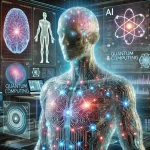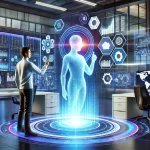
Supercomputer Simulations Reveal Molecular Secrets of Sperm-Egg Fusion
February 5, 2024In a groundbreaking study, researchers from ETH Zurich have unraveled the intricate molecular events leading up to the fusion of sperm and egg, shedding light on the precise moment of fertilization. Using powerful supercomputer simulations on “Piz Daint,” the Swiss National Supercomputing Centre’s flagship, the team visualized the dynamic interactions between JUNO and IZUMO1 proteins, uncovering mysteries that could revolutionize fertility research.
Previously, scientists understood that the initial connection between egg and sperm involved JUNO and IZUMO1 proteins forming a complex. However, crystal structures failed to provide a clear mechanism. The ETH Zurich team’s simulations, lasting 200 nanoseconds each, revealed a network of over 30 short-lived contacts supporting the JUNO-IZUMO1 complex. This dynamic network, where bonds rapidly form and break, opens new avenues for contraceptive development and understanding fertility-affecting mutations.
Professor Viola Vogel emphasized the complexity of the simulations in a watery environment, stating, “The simulations provide a more detailed picture of the dynamics of the interactions.” The discovery that zinc ions play a crucial role in disrupting protein binding adds a layer of understanding to the post-fertilization “zinc spark,” preventing additional sperm from entering the egg and influencing normal development.
Simulations also addressed the mystery of JUNO’s interaction with folate. While lab experiments showed no binding in water, simulations revealed that folate binding becomes possible only after IZUMO1 binds to JUNO. This insight not only advances structural biology but also lays the foundation for pharmaceutical development, with implications for neural development in fetuses.
Professor Vogel emphasized the importance of simulations in understanding highly dynamic processes like fertilization, stating, “The findings we derive from them would hardly be possible based on the static crystal structures of the proteins.” The team believes that their decoded dynamic mechanisms could pave the way for innovative infertility treatments, non-hormonal contraceptives, and advancements in in vitro fertilization technology.
This groundbreaking research marks a significant leap forward in comprehending the intricacies of fertilization, offering hope for novel approaches to addressing fertility challenges and providing potential breakthroughs in reproductive medicine.


















